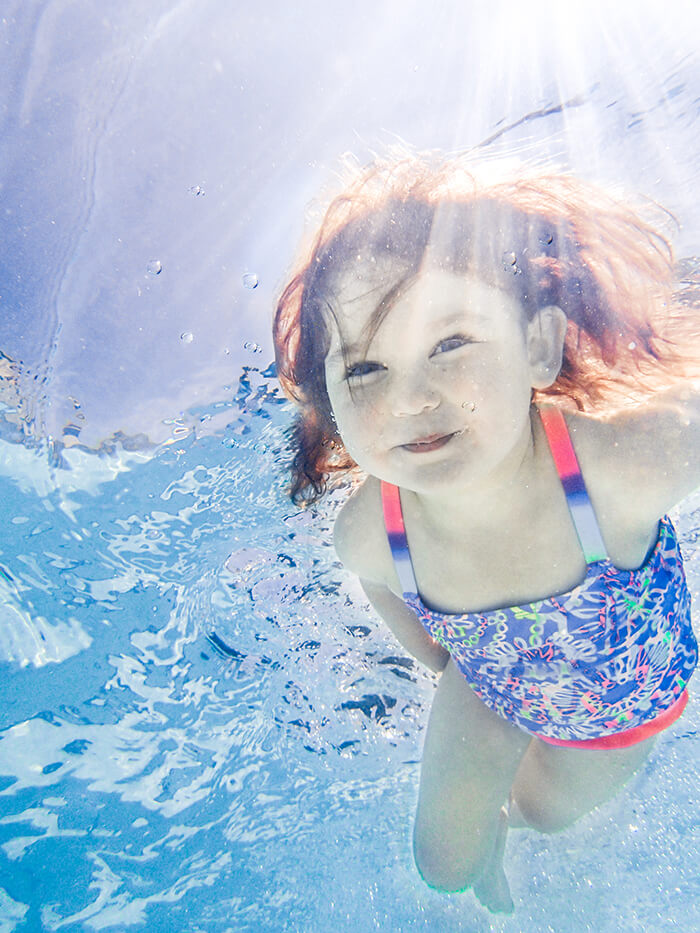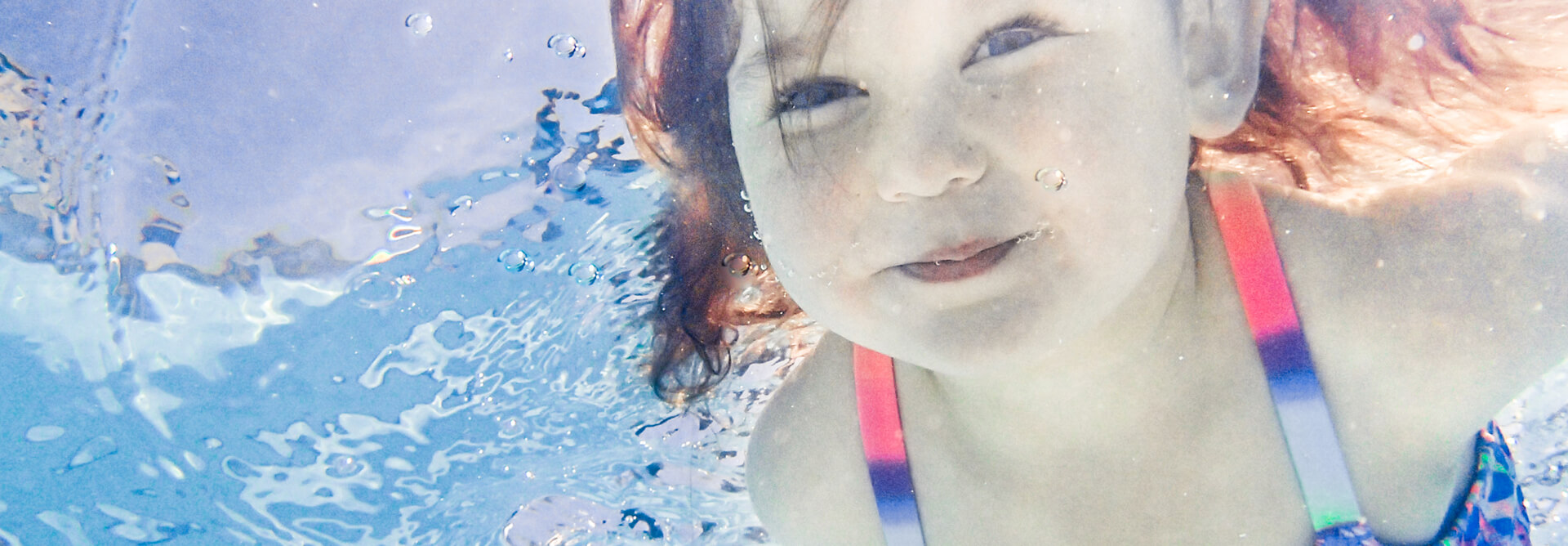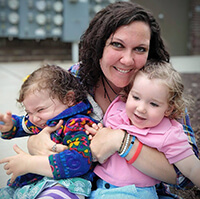“One!... Two!... THREEEEEEE!!!!”, she screams as she leaps into the air. I’ve stopped holding my breath as she jumps; stopped waiting for her to emerge from the water to see if she’s smiling or not. Last year, she taught herself to swim, one tiny skill after another. Face wet, body under, jump independently, blow bubbles, kick, float. Soon she could jump in and get to me without much effort.
This year, she took off like a rocket. The summer started and she forgot she could swim. She clung to me in the water and I promised I’d hold her until she remembered how to swim. One day, she told me she wanted to swim the length of the entire pool.... and she did. I swam next to her, ready to help if needed, almost afraid to assume she’d actually make it the whole way for fear I’d jinx it. Her tiny head broke the surface of the water every few seconds to grab a breath as she pushed her body through the water with the determination only toddlers possess.
Did I forget to mention that she’s only 3?
Swimming lessons were on our radar the minute we realized we were moving somewhere with a pool. Should we put her in baby swim lessons? Should we insist on floaties and keep her in the shallow end until she could pass a swimming test? Were we pushing her if we put her in swim lessons? Neglecting her if we didn’t?
Ultimately, we decided to keep the floaties off, skip the formal lessons, and just spend hours in the pool with her, following her lead, letting her dictate what kind of support she needed. That first summer she logged at least 12 hours a week in the pool. She was unstoppable. Once she learned a new skill, she’d repeat it over and over and over and over for hours. Her grown-ups spent hours standing next to the edge of the pool, watching her 2-year-old body soar through the air, pulling her up from the cool water as she learned to kick her own way up to the surface.
As she progressed in her swimming skills, I found myself profoundly aware of the need for me to walk beside her and not block her way. If I stood just in front of her, she’d stop right where my body started. She trusted my boundaries, even if I wasn’t intentionally setting them. If I stood to the side and required that she make a choice in which way and how far she went, she’d make different decisions every time. Sometimes she’d hook left and swim to me for support. Other times, she’d push herself as I swam beside her, determined to get to the other side of the pool on her own toddler-power.
Her path to becoming a swimmer wasn’t a straight one. Some days she’d propel herself like a rocket through the water and I’d marvel at her speed and strength—she seemed to gain skill after skill at an alarming rate. Other days, she’d ask me to hold her and meet her underwater for tea parties and mermaid kisses. No matter what she was working on that day, I made it my personal goal to trust that she was working in the way she needed to in order to get where she wanted to be.
This is what self-direction is, isn’t it? The learner learns how and when they are ready. It’s what every grown-up who supports self-direction hopes for- a genuine and unyielding drive to learn something new that ultimately ends in mastery of a new skill. This is the stuff self-directed dreams are made of.
Still, there is an additional component we don’t always acknowledge. Knowing when to walk beside a learner, just out of reach but present and available is a skill most adults haven’t developed. How many times do we stand right in front of our kids—literally and proverbially—ready to “help”? How many times have we inadvertently stopped our kid’s progress because our own experiences, fears, and practical needs encourage us to create an invisible barrier, even when we are so sure we’re encouraging them.
Beyond that, do we also know when to step back in front of them? Make our support more visible? When to pull them up from the water and offer them a breath of fresh air and a break? Do we know when to allow them down days—days where they don’t feel like practicing in the way that looks like practice to our grown-up eyes? Do we allow them time to practice breathing, listening, feeling, and integrating the big stuff they are working on?
Despite what many critics think, the adult role in a child’s self-directed journey isn’t to throw our learners into the deep end and trust that they will figure out how to swim. Our role is to swim beside them and be present in a way that allows us to work in flow with their cues, verbal and non-verbal, so that we can give support that allows them to flourish. That work is far more rewarding and FAR more difficult than the top down hierarchy of a conventional learning environment.
My 3-year-old is currently in the pool, floating on her back, staring at the clouds. At some point on her journey, she figured out that she could float, alone, and that floating gives her a new perspective on her world. I’ve asked her what she sees up there. Sometimes she says, “clouds”. Other times she says “everything”. That’s what makes my breath catch. Not her swimming across the pool, not her learning to soar through the air and trust the water to catch her—I’m most in awe of the way that learning how to swim on her own has taught her more about her individual experience than anything I could ever tell her. Her body is capable, the water gives her support in ways the land doesn’t, her mama is always beside her, and if she discovers a new perspective... she can see everything.

If you enjoyed this article and feel called to give back to ASDE, here are ways you can support our work:
- Donate money
- Share our content with others! Click one of the buttons above to easily share on Twitter, Facebook, or email.
- Consider becoming a Contributor for Tipping Points
Tipping Points Magazine amplifies the diverse voices within the Self-Directed Education movement. The views expressed in our content belong solely to the author(s). The Alliance for Self-Directed Education disclaims responsibility for any interpretation or application of the information provided. Engage in dialogue by reaching out to the author(s) directly.






